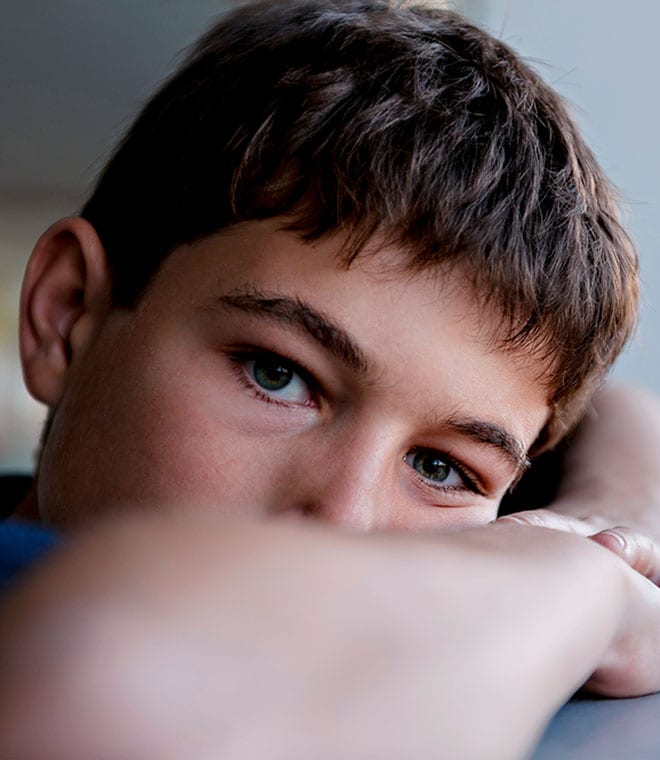Health
Autism in children: What you need to know
By Ruben J. Rucoba, MD Apr 15, 2025 • 6 min
Facing a possible diagnosis of autism can be overwhelming for parents and caregivers. But rest assured, help is out there.
What is autism?
Autism spectrum disorder (ASD), also referred to as autism, is a group of neurological and developmental conditions most often characterized by difficulties with social interaction, repetitive behaviors and communication. While some children with autism may need lifelong support, others can live independently as adults.
What is the cause of autism in children?
There is no single known cause for ASD. There may be contributing factors, but they are not necessarily the cause. These may include:
- A genetic tendency toward autism
- A mix of genetic and environmental influences, such as advanced parental age or birth complications
- Problems in the early development of several areas of the brain
After much research, it has been determined that vaccines do not play a role in increasing the risk for autism.
What are the signs of autism in children?
There are some common signs of ASD to look out for in babies, toddlers and infants. Children who do not have autism may also show one or more of these signs. However, in children with autism, these symptoms affect their daily functioning.
Babies and toddlers
Signs of ASD most often appear before the age of 2 years and can sometimes be seen as early as 6 months. They may include:
- Limited or no eye contact by 6 months
- Not smiling very often by 6 months or showing few happy expressions
- Not responding to facial expressions (like smiles or sounds by 9 months)
- Little or no babbling by 12 months
- Not responding to their name (although they may respond to other sounds) by 12 months
- Exhibiting few or no gestures (like pointing, waving or showing objects) by 12 months
- Saying only a few or no single words by 16 months
- Saying very few or no meaningful two-word phrases by 24 months
Children
Some children with ASD develop normally until 18 to 24 months, then stop developing or even lose some function. However, common signs of ASD that can appear at any age include:
- Communication issues, such as delayed speech, repeating words and mixing up pronouns (perhaps referring to others as “I” and to themselves as “you”)
- Not understanding other people’s feelings or having trouble talking about their own feelings
- Liking routine and repetition and having trouble with change
- Not playing imaginary games (like pretending to feed dolls)
- Repeating the same motions (like rocking, spinning, flapping their hands and swaying)
- Being either very sensitive or not at all sensitive to smells, sounds, lights, textures and touch
- Avoiding eye contact and wanting to be alone
How is autism diagnosed?
Diagnosing autism can be challenging since there is no blood test or X-ray that can lead to a diagnosis. Typically, a pediatrician can help children by monitoring for delays in their development. After that, they may recommend a visit to a specialist who can assist further. These specialists might be developmental pediatricians, child psychologists, speech pathologists or occupational therapists. The specialist may do a formal, thorough developmental evaluation to diagnose autism.
What treatments are available for autism?
There is no known cure for autism. However, many interventions have been developed and studied to lessen autism symptoms in children, improve communication and thinking skills, and maximize the child’s ability to function in society. Because every child has their own unique strengths and weaknesses, each therapy plan should be made specific to that child. Common interventions include:
- Speech and occupational therapy
- Training in social skills
- Behavioral therapies such as applied behavioral analysis (ABA), which is therapy that encourages positive behaviors and discourages negative ones
- Assistive technology, such as communication boards and tablets
- Developmental, Individual Difference, Relationship-based approach (also called “Floor Time”). This focuses on emotional and relationship development, as well as how the child deals with sights, sounds and smells.
- Medications for symptom management
- Early Intervention (EI) services and Individualized Education Programs (IEP) in school
- Psychological therapy, such as Cognitive Behavioral Therapy (CBT), to help with anxiety or depression symptoms
It may be overwhelming for parents or caregivers to learn that their child has autism spectrum disorder, but there is help available. Remember to seek advice from your child’s healthcare provider to learn how to best support their individual needs. Finally, reach out to friends, relatives or a mental health professional for emotional support. It’s just as important to talk through how you’re feeling.
Updated by Julie McDaniel, MSN, RN, CRNI, April 2025.
Sources:
- https://www.autismspeaks.org/what-autism
- https://www.nimh.nih.gov/health/topics/autism-spectrum-disorders-asd
- https://www.autismspeaks.org/signs-autism
- https://www.healthychildren.org/English/health-issues/conditions/Autism/Pages/Early-Signs-of-Autism-Spectrum-Disorders.aspx
- https://www.cdc.gov/autism/about/
- https://www.cdc.gov/autism/signs-symptoms/index.html
- https://www.cdc.gov/autism/diagnosis/
- https://www.cdc.gov/autism/treatment/
- https://www.autismspeaks.org/treatments-autism
- https://www.nimh.nih.gov/health/topics/autism-spectrum-disorders-asd#part_2281
- https://www.autismspeaks.org/tips-using-assistive-technology-devices
- https://www.autismspeaks.org/autism-school-your-childs-rights

